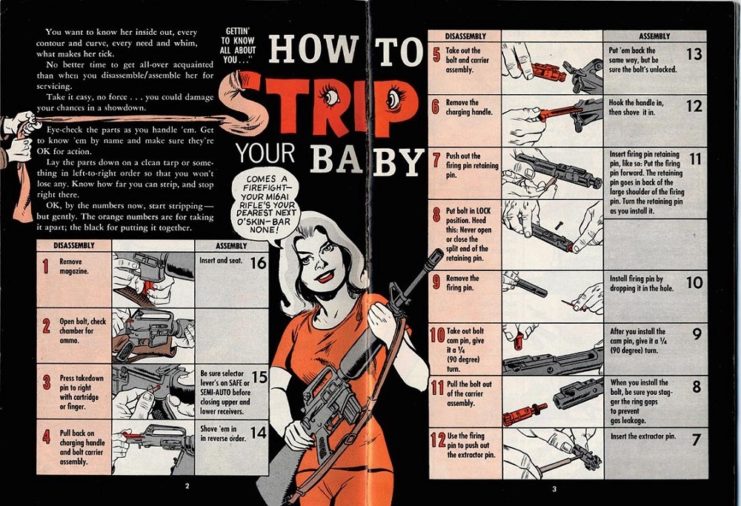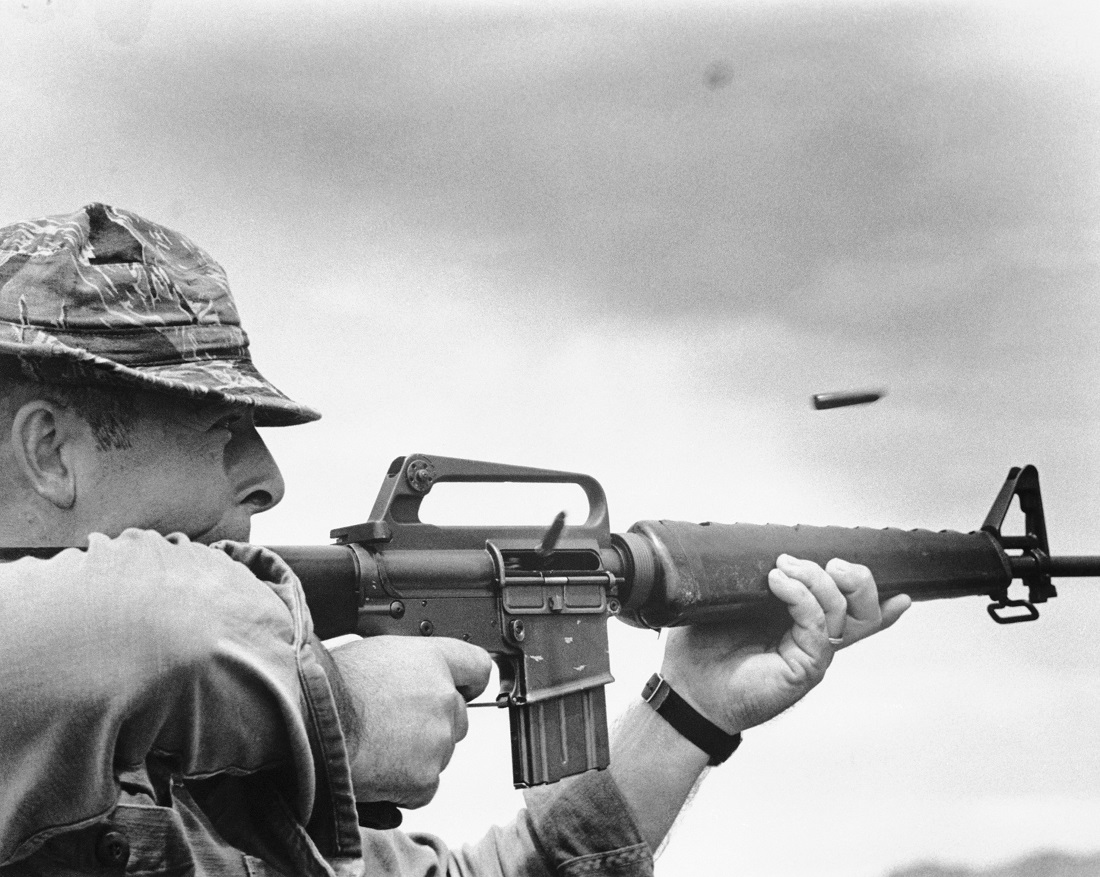The M16 assault rifle was meant to revolutionize the soldier, giving him a powerful, lightweight, and flexible all-in-one weapon. With the stopping power and accuracy of a rifle, the compactness of a submachine and, in short bursts, the firepower of a squad automatic weapon, the M16 should have instantly made everything before it redundant. But it didn’t.
The M16’s poor reception

When the M16 was introduced as the standard infantry rifle in the mid-1960s, US troops had been using the large and heavy M14, which fired the powerful 7.62 round. Although the M14 was familiar and possessed great stopping power, it was uncontrollable in automatic fire, meaning troops could not match the level of output from the AK-47. The M16 used a 5.56 round that still carried plenty of stopping power but was much more controllable.
In addition, the smaller rounds and lighter weight of the M16 meant troops could carry more ammunition.
However, as soon as the rifle landed in the hands of American soldiers, problems began. The rifle that was supposed to help them was actually making their lives harder, and sometimes even taking it from them.
When the M16 arrived, troops, who had trained with the M14, were not provided with cleaning kits or manuals for their new weapon. They suffered from an alarmingly high rate of failures in combat, from rounds failing to extract to the rifle simply jamming up.
The weapon used a small and lightweight direct impingement system, but this heated the receiver up and exposed it to large quantities of combustion gasses. The heat tended to burn off the much-needed lubricating oils in the receiver, while the combustion gasses built-up carbon deposits. This resulted in frequent stoppages.
These problems were then exacerbated by troops, who had fallen for Colt’s marketing that managed to suggest a ‘self-cleaning gas system’ meant a ‘self-cleaning rifle.’
After a government investigation into the M16’s issues, the weapon received a number of desperately needed changes. This updated version, designated the M16A1, arrived in 1967, and immediately malfunction rates dropped dramatically. Equally important was the addition of a cleaning kit, lubricant, and a field manual.
The M16’s manual

Despite the chaos all around the soldiers fighting in the Vietnam War, the M16’s freshly released manual was rather entertaining. It was called “M-16A1 Rifle: Operation and Preventative Maintenance,” and was illustrated by Army comic artist Will Eisner. Eisner helped in the production of manuals for vehicles during WWII.
The manual’s first chapter is provocatively titled “How to Strip Your Baby.” It features a female character that every 1960s GI had daydreamed about, guiding the soldier through the instructions with the troops’ own slang.

The manual says “You want to know her inside out, every contour and curve, every need and whim, what makes her tick.”
Another chapter focuses on caring for the rifle’s magazine, which is represented by another female character named “Maggie.” Chapter “Sweet 16” provides more general tips for looking after the rifle, like making sure to never close the upper and lower receivers while the selector switch is in the auto position.
“All the Way with Négligé” runs over the plastic coverall bag used to protect the M16 from the elements. It reminds troops that the cover does not replace maintenance, and is not guaranteed to be waterproof.
The manual did an exceptional job teaching troops the important and rather particular methods to ensure the M16A1 functioned every time when needed. Its familiar, attractive art and engaging language was both entertaining and useful for GIs, who were able quickly to absorb the information.
The manual clearly and simply cleared up any confusion and myths related to the rifle, like being self-cleaning, while its Vietnam-related content helped troops deal with Vietnam-specific issues.
The M16A1, with the help of the field manual, significantly reduced malfunctions and matured the M16 into a solid rifle.
